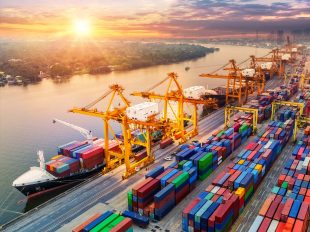Digitisation is revolutionising all the sectors, with no exceptions. As pointed out several times in the past, however, this process has been tackled more slowly by some sectors that have been less receptive to technological innovations.
The transportation and logistics sector was definitely one of the slower movers. However, in recent years, two crucial factors have accelerated the digitisation of the sector: on the one hand the powerful development of e-commerce, on the other the outbreak of the pandemic.
Both of these elements have significantly increased the flows of goods on the move internationally. According to data from the World Economic Forum, 85 million packages and documents are currently delivered every day.
In order to deal with such a large volume of work efficiently, the main players in the sector are being obliged to take action: just think that the WEF estimates that 1,500 billion dollars will be invested in the field of logistics alone by 2025 for digital transformation. But what are the main trends for 2022?
Transportation and logistics: the main trends for 2022
Process automation is undoubtedly the cornerstone of development of the world of transportation and logistics 4.0. In 2022, the most dynamic companies will focus on picking automation, and on warehouse automation in general.
The objective in this sense is to reduce manually managed operations, and therefore minimise not only costs, but times and errors too.
The initiatives on the drawing board therefore range from the implementation of automatic systems capable of bringing the goods to be shipped closer to the operators, to the development of Dark Warehouse, and therefore fully automated warehouses that do not require the constant presence of operators.
But that’s not all. Automation can also be extended to truck loading and unloading systems resulting, among other things, in heightened safety for the operators involved. Since the flows managed will continue to grow, it will also be rewarding to know how to fully use all the data collected and available, through Big Data analyses which will make it possible to optimise the entire supply chain.
Additionally, we must not forget that, in addition to cutting costs and times, the digitisation of the transportation sector will also allow us to cut emissions, by optimising the routes and making the problem of empty returns easier to solve in the post-delivery phase.
Finally, as in many other industries, a further trend for 2022 is document dematerialisation and digitisation, which in turn provides economic and environmental benefits.
The digitisation path of logistics and transportation
What practical solutions can a company actually implement to make transportation more efficient? What are the most important management software products for transportation and logistics?
At the base there should first be a system for optimising the management of the operations, i.e. a modern Transport Management System that allows operators to better organise their trips, consequently offering accurate reports to continuously improve loads and routes.
As for logistics, the starting point is the Warehouse Management System, a system capable of mapping the entire allocation of goods to allow the optimisation of the activities carried out by both the operators and the automation systems. Doing so reduces the costs of storing and picking the products, while guaranteeing constant full control of the processes in progress.
And although automation does mean fewer operators in the warehouse, personnel management processes in the world of transportation and logistics are still very important.
The third step could therefore be to implement HR solutions for the dematerialisation of documents, so as to make personnel management as well as the communication between company and employees (and vice versa) faster, more practical, and less expensive.
A path of this type gives the company the opportunity to offer a high-quality service while respecting the proposed times, two crucial factors for those operating in the logistics and transportation sector in this new era.
